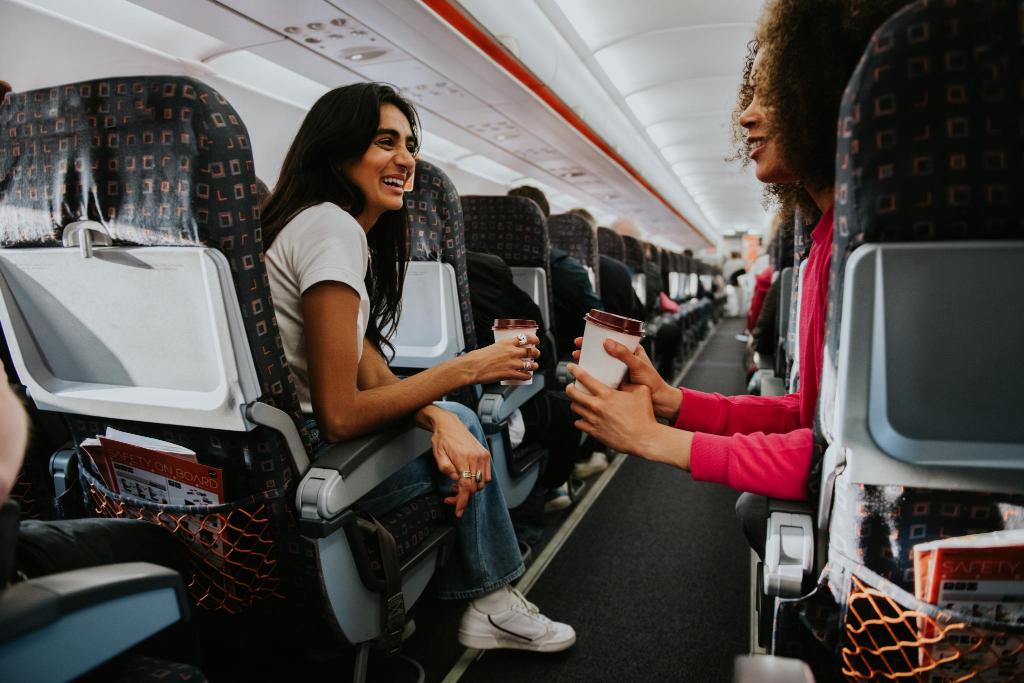Middle seats on airplanes have long maintained a universally bad reputation among travelers worldwide, but aviation travel experts and airline industry professionals say they may not actually be the biggest comfort issue on board modern aircraft, as passengers often overlook other critical seating factors that can have a much greater cumulative impact on passenger comfort, noise exposure, unwanted movement disruption, and even post-flight fatigue that lingers long after landing.
Sam Argyle, Managing Director at Alternative Airlines, says passengers frequently overlook numerous other important seating factors that can dramatically affect their in-flight experience, focusing disproportionately on avoiding the dreaded middle seat while ignoring potentially more significant comfort detractors throughout the aircraft cabin.
“Most flyers instinctively focus on avoiding the middle, but the back of the aircraft—near toilets and galleys—tends to be consistently worse for overall comfort,” Argyle explained. “You experience constant engine noise, high foot traffic from passengers and crew, unpleasant bathroom odors, and you’re inevitably the last to disembark the plane after landing.”
This expert perspective addresses travelers asking “What are the worst seats on a plane?” and “Where should I avoid sitting on flights?” with surprising insights beyond middle seat avoidance.
Seat Pitch and Width: The Most Misunderstood Factors
Seat pitch and seat width represent two of the most important, and quite often most fundamentally misunderstood, factors affecting passenger comfort on commercial flights. Comprehensive research shows short-haul economy seat widths can measure as narrow as just 15.5 inches, while long-haul cabin seats typically range between 16.2 and 18 inches—a seemingly small difference that becomes enormously significant over hours.
Seat pitch in economy class can vary dramatically from a cramped 28 inches to a more comfortable 34 inches depending on the specific aircraft type and airline policies, representing a six-inch difference that fundamentally changes the flying experience.
For taller passengers or anyone flying more than two hours, aviation experts emphasize that those extra precious inches matter far more than which side of the aisle you’re positioned on or whether you have a window or middle seat.
These seat dimensions address travelers asking “What is seat pitch on airplanes?” and “How wide are economy seats?” with specific measurements for comparison.
Noise Sensitivity: The Overlooked Comfort Factor
Noise sensitivity represents another frequently overlooked issue that significantly impacts passenger wellbeing. Seats located directly behind or beneath the aircraft wings are consistently the loudest positions in the cabin due to proximity to jet engines, which can lead to increased travel fatigue, elevated stress levels, and difficulty sleeping, especially on overnight flights or extended long-haul journeys.
The constant engine drone at these locations can measure 10-15 decibels louder than quieter cabin sections, making a substantial difference in passenger comfort over multi-hour flights.
Exit Row Seats: Not Always the Best Choice
Not all seemingly “good” seats are as straightforward or beneficial as they initially appear. Exit-row seats may look attractive due to extra legroom, but the row immediately in front of exit rows often has limited or no recline capability due to safety regulations, making comfortable sleep practically impossible on night flights or red-eye routes.
Additionally, exit row seats themselves may lack under-seat storage, have immovable armrests, and can be colder due to proximity to doors—factors that offset the legroom advantage.
This exit row reality addresses travelers asking “Are exit row seats worth it?” and “What are disadvantages of exit row seats?” with balanced considerations.
Mobility and Health Concerns on Long Flights
Passenger mobility is increasingly recognized as a growing health concern on modern flights. Parliamentary research has specifically warned that limited movement on modern long-haul aircraft can have serious adverse health effects including deep vein thrombosis (DVT), muscle stiffness, and circulation problems, which is why some health-conscious travelers deliberately choose aisle seats to make it easier to stand regularly, stretch muscles, and move freely about the cabin.
The aisle seat advantage for mobility addresses travelers asking “How to prevent blood clots on flights?” and “Best seats for circulation on planes?” with practical positioning.
Expert Recommendations for Seat Selection
Aviation experts and travel professionals generally advise strategic seat selection based on flight duration and personal priorities:
For flights 3+ hours: Prioritize legroom and mobility access over specific seat position, considering aisle seats near emergency exits (but not the row directly in front) for optimal comfort and health.
For shorter flights: Seats closer to the front of the cabin can significantly reduce total time on board by enabling faster deplaning, saving 10-15 minutes on busy flights.
For light sleepers: Actively avoid seats near galleys, toilets, wing sections, and rear cabin areas where noise, light, and activity levels remain consistently high throughout flights.
These seat selection strategies address travelers asking “How to choose best airplane seat?” and “What are the quietest seats on a plane?” with actionable advice.
The Case for Standardized Seat Information
Parliamentary research referenced by industry experts has called for clearer and standardized seat dimension listings across all airlines so travelers can make genuinely informed choices before booking flights, noting that many comfort factors on board are cumulative rather than isolated—meaning multiple small discomforts combine to create significantly degraded experiences.
Currently, finding accurate seat specifications requires checking multiple sources, with information often incomplete or outdated on airline websites.
Why Flying Feels Harder Than Before
“When people say flying feels harder than it used to, it’s rarely just one single thing,” Argyle explained. “It’s the combination of noise exposure, reduced space, cabin heat, scheduling fatigue, and restricted movement all happening simultaneously over extended periods.”
This observation reflects broader airline industry trends toward seat densification, where carriers add more rows and reduce pitch to maximize revenue, often at the expense of passenger comfort and flying experience quality.
The cumulative discomfort addresses travelers asking “Why is flying so uncomfortable now?” and “Have airline seats gotten worse?” with industry context.
Airline and Aircraft Variations
Seat comfort varies dramatically not just by seat location but by airline and aircraft type. Some carriers maintain more generous economy seat specifications while others pursue ultra-dense configurations. Newer aircraft models like the Airbus A350 and Boeing 787 Dreamliner offer improvements including higher humidity, better air filtration, and larger windows that enhance comfort regardless of specific seat location.
Researching aircraft type before booking addresses travelers asking “Which airplane is most comfortable?” and “Best aircraft for long flights?” with valuable planning information.
Seat Selection Tools and Resources
Travelers can utilize several resources for informed seat selection including SeatGuru for detailed aircraft seat maps with color-coded ratings, airline seat map tools showing current availability, ExpertFlyer for advanced seat tracking and alerts, Google Flights showing aircraft type before booking, and airline-specific apps providing real-time seat availability.
Premium Economy and Business Class Alternatives
For travelers finding economy increasingly uncomfortable, premium economy represents a middle ground offering wider seats, increased pitch, better recline, and often improved service at 50-100% premium over economy rather than 300-400% for business class.
Comfort upgrade options address budget-conscious travelers asking “Is premium economy worth it?” and “Cheapest way to fly comfortably?” with alternatives.
Future of Airline Seating
The future may bring innovations including adjustable seat pitch allowing passenger customization, improved cushioning materials reducing pressure points, better sound insulation in noisier cabin sections, and potentially standing seats or saddle seats for ultra-short flights—though passenger acceptance remains uncertain.
For more expert flight comfort guides, airline seat comparisons, travel health tips, flight booking strategies, and air travel insights that help you fly more comfortably and strategically, visit The Inspiring Insight. Stay informed with our comprehensive coverage of airline policies, aircraft reviews, seat selection advice, travel wellness, and aviation industry trends that affect passenger experiences. Subscribe for the latest travel tips, comfort hacks, airline comparisons, and flying strategies.




